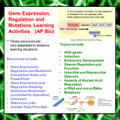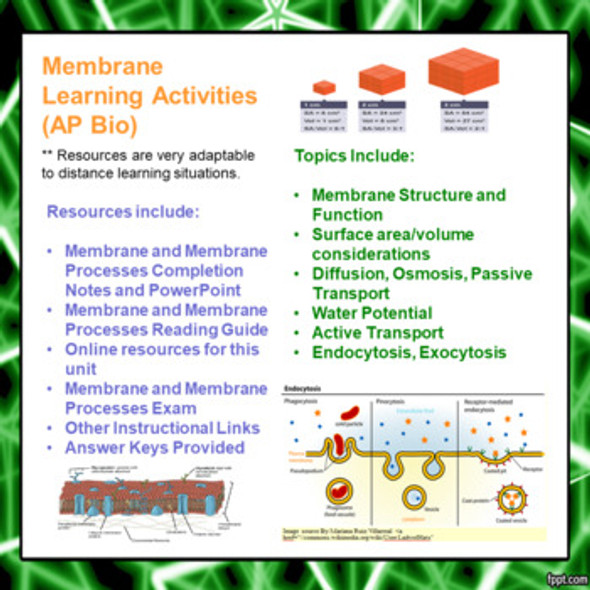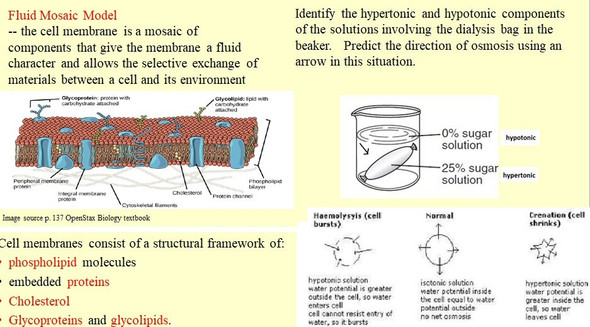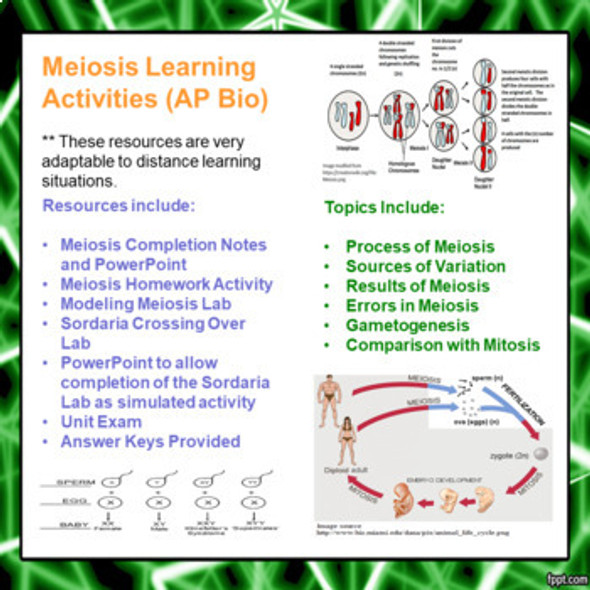Gene Regulation, Expression and Mutations Learning Activities for AP Biology (Distance Learning)
- Bulk Pricing:
- Buy in bulk and save
- Contributor:
- Monday's Rescue
- Grade Level:
- 9-12
- Product Type:
- Learning Package (Notes, PowerPoint, Homework)
- File Type:
- doc, pdf, ppt
- Pages:
- 44
- Answer Key:
- Yes
Description
This package of learning materials addresses topics taught in AP Biology or other upper level biology classes on aspects of gene regulation, gene expression and mutations. Some of the specific topics addressed include HOX genes, embryonic induction, inducible and repressible operons, control of gene expression, errors in meiosis and types of mutations in reference to natural selection. The specific learning objectives and standards are addressed at the end of the package description. This unit has been correlated to the 2019-2020 revision of the AP Biology ETS, as well as the NGSS and Common Core learning standards.
All materials are may be modified by you to suit your needs and those of your students. Documents are available in both word and pdf format. Many of these materials may suitable for use in a flipped classroom.
The file contains 44 pages of student learning materials and one 75 slide PowerPoint.
The answer keys to all activities and the gene expression and regulation test are included.
The specific contents of the learning package includes the following items (the page count for these items are actual student handouts as answer key page counts are not included):
-- Learning Goals, NGSS Correlations, ETS AP Biology and Common Core Learning standards correlations (3 pages)
-- Gene Regulation, Expression and Mutation Completion Notes (23 pages)
-- PowerPoint to accompany the Gene Regulation and Expression Completion Notes (75 slides)
-- Gene Regulation and Expression Reading Worksheet (correlated to the free Openstax Biology text but can be used with other information sources) (8 pages/44 short answer questions)
-- Links to other web based Gene Regulation and Expression Free Online Resources (including building lac operon from dollar store materials) (1 page)
-- Gene Regulation and Expression Exam (50 multiple choice and diagram questions) (9 pages)
AP Bio/ETS Learning Objectives
Enduring Understanding
IST-2 Differences in the expression of genes account for some of the phenotypic differences between organisms.
Learning Objectives
IST-2.A Describe the types of interactions that regulate gene expression.
IST-2.B Explain how the location of regulatory sequences relates to their function.
IST-2.C Explain how the binding of transcription factors to promoter regions affects gene expression and/or the phenotype of the organism.
IST-2.D Explain the connection between the regulation of gene expression and phenotypic differences in cells and organisms.
IST-2.E Describe the various types of mutation.
Gene Regulation and Expression Learning Goals
Upon the completion of this unit the student will be able to:
1. state the function of homeotic genes.
2. describe the general structure and function of HOX genes.
3. explain what is meant by embryonic induction.
4. recognize that cell or organism phenotype is determined by the combinations of genes that are expressed and by the levels of their expression.
5. describe the ABC model of flower development.
6. recognize that apoptosis and its proper timing is required for embryonic development.
7. describe some basic differences between prokaryotic and eukaryotic gene regulation.
8. explain why operon regulation of needed substances is preferable to conventional chemical feedback regulation in prokaryotes.
9. explain the difference between an inducible and a repressible gene
10. state an advantage of bacterial grouping of genes with related functions.
11. briefly explain what an operon is.
12. describe the function of the operator and promoter on the operon.
13. explain how repressor proteins interact with the operon to change its function.
14. describe the function of the trp operon.
15. explain why the lac operon is usually turned off.
16. discuss the mechanism by which the lac operon is inducible.
17. describe some aspects of the evolution of gene regulation in eukaryotes.
18. explain what is meant by epigenetics.
19. recognize that reversible modifications of DNA or DNA wrapping can produce epigenetic changes.
20. recognize that DNA packing prevents transcription from occurring.
21. recognize that DNA methylation can turn genes off.
22. explain how the acetylation of histones allows genes to be turned on.
23. list two control regions of eukaryotic DNA and explain how they influence transcription.
24. explain what is meant by alternative RNA splicing and discuss its major purpose.
25. explain how mRNA degradation influences protein synthesis.
26. explain what is meant by RNA interference.
27. discuss how si RNA and micro RNA produce RNA interference.
28. discuss how ubiquitin and proteosomes are involved in the process of protein degradation.
29. recognize that mutations may have a positive, negative or neutral effect on the phenotype of an organism.
30. briefly explain how changes in the CFTR gene may produce cystic fibrosis.
NGSS Standard Addressed:
HS-LS1-1. Construct an explanation based on evidence for how the structure of DNA determines the structure of proteins which carry out the essential functions of life through systems of specialized cells.
Common Core State Standards Connections:
ELA/Literacy
RST.11-12.1 Cite specific textual evidence to support analysis of science and technical texts, attending to important distinctions the author makes and to any gaps or inconsistencies in the account.
WHST.9-12.2 Write informative/explanatory texts, including the narration of historical events, scientific procedures/ experiments, or technical processes.
WHST.9-12.9 Draw evidence from informational texts to support`analysis, reflection, and research.
Terms of Use
Purchase of the product is for classroom use by the purchaser only. It is a violation for individuals, schools, and districts to redistribute, sell, or post this item on the Internet.
This work is licensed under a Creative Commons Attribution-NonCommercial-ShareAlike 4.0 International License.
This learning package bundle is part of the AP Biology Complete Course. The complete course contains 22 learning package bundles in addition to this one. Save nearly 60% over the cost of buying 23 individual unit learning bundles with your purchase of the complete course.
Please feel free to browse any of the other products in my store.














